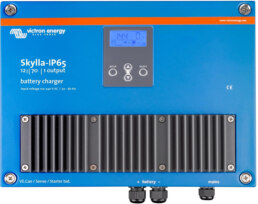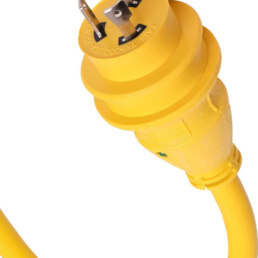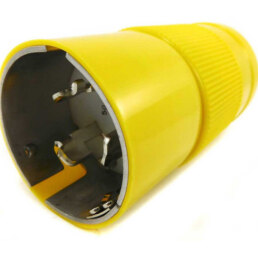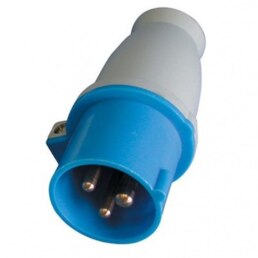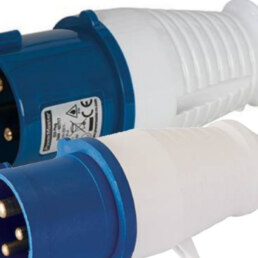VOLTAGES BY COUNTRY ⚡ CRUISING BETWEEN 110 & 220 VOLTS
MEDITERRANEAN
| Flag | Country | Voltage | Frequency |
|---|---|---|---|
| 🇪🇸 | Spain | 230 V | 50 Hz |
| 🇫🇷 | France | 230 V | 50 Hz |
| 🇮🇹 | Italy | 230 V | 50 Hz |
| 🇲🇨 | Monaco | 230 V | 50 Hz |
| 🇲🇹 | Malta | 230 V | 50 Hz |
| 🇸🇲 | San Marino | 230 V | 50 Hz |
| 🇬🇷 | Greece | 230 V | 50 Hz |
| 🇨🇾 | Cyprus | 230 V | 50 Hz |
| 🇹🇷 | Turkey | 230 V | 50 Hz |
| 🇦🇱 | Albania | 230 V | 50 Hz |
| 🇲🇪 | Montenegro | 230 V | 50 Hz |
| 🇭🇷 | Croatia | 230 V | 50 Hz |
| 🇸🇮 | Slovenia | 230 V | 50 Hz |
| 🇧🇦 | Bosnia & Herzegovina | 230 V | 50 Hz |
| 🇮🇱 | Israel | 230 V | 50 Hz |
| 🇵🇸 | Palestine | 230 V | 50 Hz |
| 🇱🇧 | Lebanon | 230 V | 50 Hz |
| 🇸🇾 | Syria | 220 V | 50 Hz |
| 🇪🇬 | Egypt | 220 V | 50 Hz |
| 🇱🇾 | Libya | 230 V | 50 Hz |
| 🇹🇳 | Tunisia | 230 V | 50 Hz |
| 🇩🇿 | Algeria | 230 V | 50 Hz |
| 🇲🇦 | Morocco | 220 V | 50 Hz |
SOUTH PACIFIC
| Flag | Country | Voltage | Frequency |
|---|---|---|---|
| 🇦🇺 | Australia | 50 Hz | |
| 🇫🇯 | Fiji | 240 V | 50 Hz |
| 🇹🇴 | Tonga | 240 V | 50 Hz |
| 🇼🇸 | Samoa | 230 V | 50 Hz |
| 🇦🇸 | American Samoa | 120 V | 60 Hz |
| 🇨🇰 | Cook Islands | 240 V | 50 Hz |
| 🇵🇫 | French Polynesia | 220 V | 60 Hz |
| 🇳🇨 | New Caledonia | 220 V | 50 Hz |
| 🇳🇺 | Niue | 230 V | 50 Hz |
| 🇵🇬 | Papua New Guinea | 240 V | 50 Hz |
| 🇸🇧 | Solomon Islands | 230 V | 50 Hz |
| 🇻🇺 | Vanuatu | 230 V | 50 Hz |
| 🇰🇮 | Kiribati | 240 V | 50 Hz |
| 🇹🇻 | Tuvalu | 230 V | 50 Hz |
| 🇼🇫 | Wallis & Futuna | 220 V | 50 Hz |
| 🇳🇿 | New Zealand | 230 V | 50 Hz |
CARIBBEAN
| Flag | Country | Voltage | Frequency |
|---|---|---|---|
| 🇦🇬 | Antigua and Barbuda | 230 V | 60 Hz |
| 🇧🇸 | Bahamas | 120 V | 60 Hz |
| 🇧🇧 | Barbados | 115 / 230 V | 50 Hz |
| 🇧🇿 | Belize | 110 / 220 V | 60 Hz |
| 🇨🇺 | Cuba | 110 / 220 V | 60 Hz |
| 🇩🇲 | Dominica | 230 V | 50 Hz |
| 🇩🇴 | Dominican Republic | 110 V | 60 Hz |
| 🇬🇩 | Grenada | 230 V | 50 Hz |
| 🇬🇵 | Guadeloupe (France) | 230 V | 50 Hz |
| 🇬🇾 | Guyana | 240 V | 60 Hz |
| 🇭🇹 | Haiti | 110 V | 60 Hz |
| 🇯🇲 | Jamaica | 110 V | 50 Hz |
| 🇲🇶 | Martinique (France) | 230 V | 50 Hz |
| 🇲🇸 | Montserrat (UK) | 230 V | 60 Hz |
| 🇵🇷 | Puerto Rico (US) | 120 V | 60 Hz |
| 🇰🇳 | Saint Kitts and Nevis | 230 V | 60 Hz |
| 🇱🇨 | Saint Lucia | 240 V | 50 Hz |
| 🇻🇨 | Saint Vincent and the Grenadines | 230 V | 50 Hz |
| 🇸🇷 | Suriname | 127 / 220 V | 60 Hz |
| 🇹🇹 | Trinidad and Tobago | 115 V | 60 Hz |
| 🇹🇨 | Turks and Caicos Islands (UK) | 120 V | 60 Hz |
| 🇻🇮 | US Virgin Islands (US) | 110 V | 60 Hz |
| 🇧🇶 | Bonaire, Sint Eustatius, Saba (Netherlands) | 127 / 220 V | 50 Hz |
| 🇨🇼 | Curaçao (Netherlands) | 127 / 220 V | 50 Hz |
| 🇸🇽 | Sint Maarten (Netherlands) | 110 / 220 V | 60 Hz |
| 🇦🇼 | Aruba (Netherlands) | 127 V | 60 Hz |
| 🇦🇮 | Anguilla (UK) | 110 V | 60 Hz |
| 🇻🇬 | British Virgin Islands (UK) | 110 V | 60 Hz |
| 🇧🇱 | Saint Barthélemy (France) | 230 V | 60 Hz |
| 🇫🇷 | Saint Martin (France) | 230 V | 60 Hz |
AMERICAS
| Flag | Country | Voltage | Frequency |
|---|---|---|---|
| 🇺🇸 | United States | 120 V | 60 Hz |
| 🇨🇦 | Canada | 120 V | 60 Hz |
| 🇲🇽 | Mexico | 127 V | 60 Hz |
| 🇬🇱 | Greenland (DK) | 230 V | 50 Hz |
| 🇧🇲 | Bermuda (UK) | 120 V | 60 Hz |
| 🇧🇿 | Belize | 110 V | 60 Hz |
| 🇬🇹 | Guatemala | 120 V | 60 Hz |
| 🇸🇻 | El Salvador | 115 V | 60 Hz |
| 🇭🇳 | Honduras | 120 V | 60 Hz |
| 🇳🇮 | Nicaragua | 120 V | 60 Hz |
| 🇨🇷 | Costa Rica | 120 V | 60 Hz |
| 🇵🇦 | Panama | 110 V | 60 Hz |
| 🇧🇸 | Bahamas | 120 V | 60 Hz |
| 🇨🇺 | Cuba | 110/220 V* | 60 Hz |
| 🇩🇴 | Dominican Republic | 110 V | 60 Hz |
| 🇭🇹 | Haiti | 110 V | 60 Hz |
| 🇯🇲 | Jamaica | 110 V | 50 Hz |
| 🇧🇧 | Barbados | 115 V | 50 Hz |
| 🇬🇩 | Grenada | 230 V | 50 Hz |
| 🇱🇨 | Saint Lucia | 240 V | 50 Hz |
| 🇻🇨 | Saint Vincent & Grenadines | 230 V | 50 Hz |
| 🇦🇬 | Antigua & Barbuda | 230 V | 60 Hz |
| 🇩🇲 | Dominica | 230 V | 50 Hz |
| 🇰🇳 | Saint Kitts & Nevis | 230 V | 60 Hz |
| 🇻🇬 | British Virgin Islands | 110 V | 60 Hz |
| 🇻🇮 | US Virgin Islands | 110 V | 60 Hz |
| 🇦🇼 | Aruba (NL) | 127 V | 60 Hz |
| 🇨🇼 | Curaçao (NL) | 127 V | 50/60 Hz |
| 🇧🇶 | Bonaire, Sint Eustatius & Saba (NL) | 127 V | 50 Hz |
| 🇵🇷 | Puerto Rico (US) | 120 V | 60 Hz |
| 🇲🇶 | Martinique (FR) | 220 V | 50 Hz |
| 🇬🇵 | Guadeloupe (FR) | 230 V | 50 Hz |
| 🇸🇽 | Sint Maarten (NL) | 110 V | 60 Hz |
| 🇲🇫 | Saint Martin (FR) | 230 V | 60 Hz |
| 🇹🇹 | Trinidad & Tobago | 115 V | 60 Hz |
| 🇨🇴 | Colombia | 110 V | 60 Hz |
| 🇻🇪 | Venezuela | 120 V | 60 Hz |
| 🇬🇾 | Guyana | 240 V | 60 Hz |
| 🇸🇷 | Suriname | 127 V | 60 Hz |
| 🇪🇨 | Ecuador (incl. Galápagos) | 120 V | 60 Hz |
| 🇵🇪 | Peru | 220 V | 60 Hz |
| 🇧🇷 | Brazil | 127/220 V* | 60 Hz |
| 🇧🇴 | Bolivia | 230 V | 50 Hz |
| 🇵🇾 | Paraguay | 220 V | 50 Hz |
| 🇺🇾 | Uruguay | 230 V | 50 Hz |
| 🇦🇷 | Argentina | 220 V | 50 Hz |
| 🇨🇱 | Chile | 220 V | 50 Hz |
| 🇫🇰 | Falkland Islands (UK) | 240 V | 50 Hz |
| 🇬🇫 | French Guiana (FR) | 220 V | 50 Hz |
`
Dual/mixed voltage: Several territories (e.g., Cuba, Saint Vincent, Curaçao) offer both ~110 V and 220 V circuits.
Double-check before plugging in appliances or use a dual-voltage model.
Frequency matters but only for a few items: While most 110–120 V systems run at 60 Hz, a few islands (Barbados, some French territories) use 50 Hz—this can affect devices with motors or clocks and microwaves.
You can charge your yacht’s house bank and run appliances in a variety of ways
1) buy a house bank battery charger and plug it in the marina separately and charge your house bank directly from the different voltage from the dock ( requires a shore power cord
2A) buy a shore power transformer that can sit on the dock and can transform 110 to 220 or vice versa – you simply wire in the pigtail to the shore connection and the converted side to your yachts inlet ( make sure it’s water resistant for rain and fused and big enough to handle your loads on board
2B) install a vessel mounted AC transformer and splice your shore power connector into this with and AB Switch
4)install a separate 220 v inverter charger for your housebank with separate 220 V inlet shore connection and fuse – you can then have a few dedicated 220 v outlets on board if needed
5) Where things get more complex is with Air conditioning or 225/50 AMP Circuits that need splitting
6) Some Marinas offer both 110 v and 220 v circuits for intl vessels – always check with a multimeter though
7) Marina voltages in many countries can vary greatly which means very sensitive gear can be damaged with shore power fluctuations
Different countries have different voltages because of historical development, early standardization decisions, and economic factors. Here’s why:
1. Early Electrical System Choices (History)
• In the late 19th century, when electricity grids were first being developed, different inventors and companies chose different standards.
• Thomas Edison (USA) promoted 110V DC systems, which later transitioned to 110–120V AC for safety and compatibility.
• Europe, influenced by AEG and Siemens, adopted 220–240V AC because higher voltage allowed power to travel longer distances with less energy loss and required thinner (cheaper) copper wires.
2. Safety vs Efficiency
• Lower voltage (110–120V): Safer for humans (less severe shocks, fewer fire risks) but requires thicker wires to deliver the same power.
• Higher voltage (220–240V): More efficient for transmitting power over long distances (smaller wires, cheaper infrastructure) but more dangerous if mishandled.
3. Economic and Material Factors
• Copper was expensive; Europe leaned toward higher voltage to reduce copper usage.
• The USA had abundant copper and prioritized safety in homes, so they stuck with lower voltage.
4. Lack of Global Standardization
• Once countries built power grids, it became too costly to change. Appliances, plugs, and power plants were all designed around existing standards, locking each country into its system.
5. Frequency (50Hz vs 60Hz) Tied to Voltage Choices
• The US chose 60Hz as it was optimal for early motors and lighting.
• Europe standardized at 50Hz because of AEG’s early turbine design.
• Voltage and frequency became linked to these regional standards.
